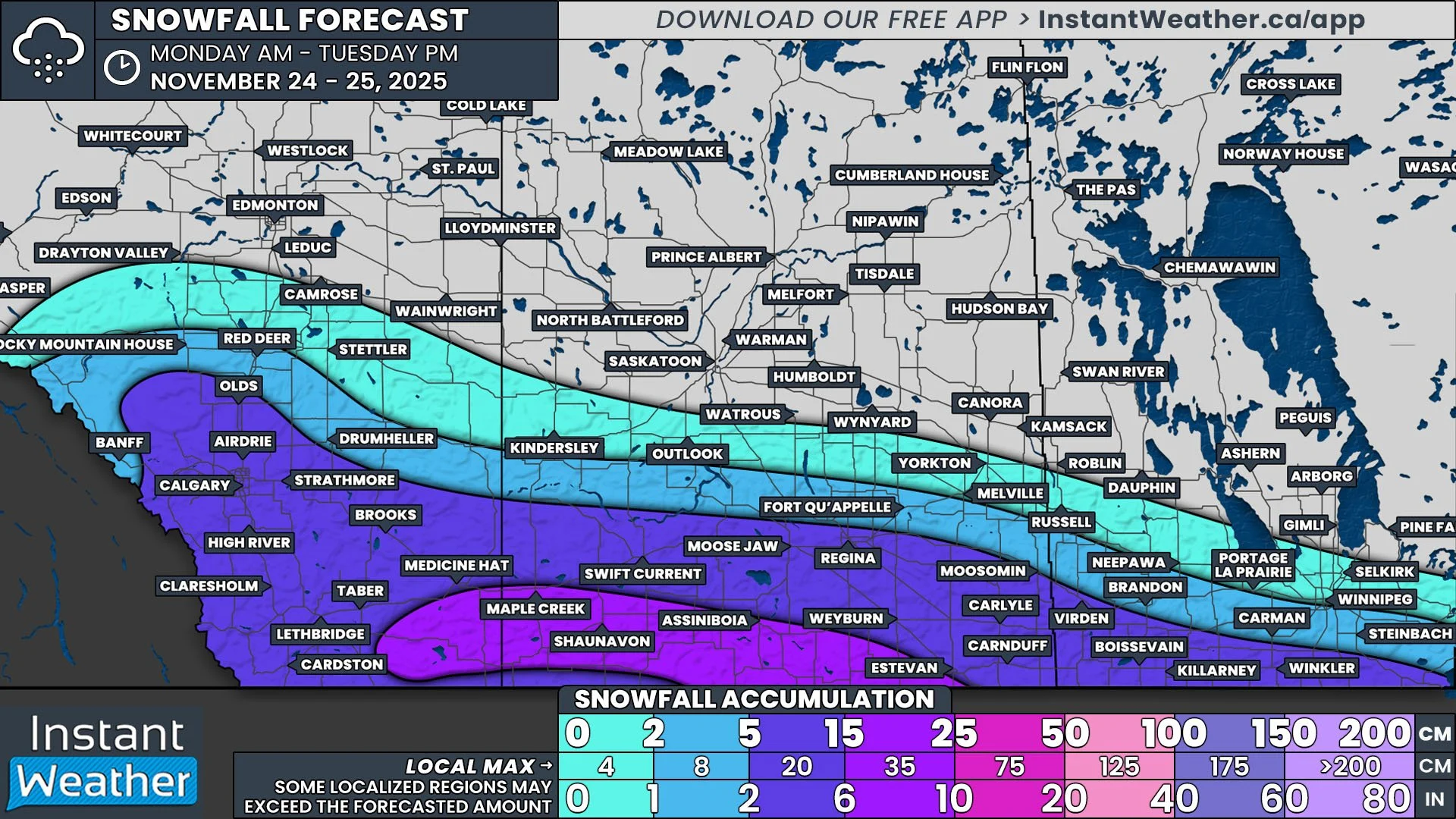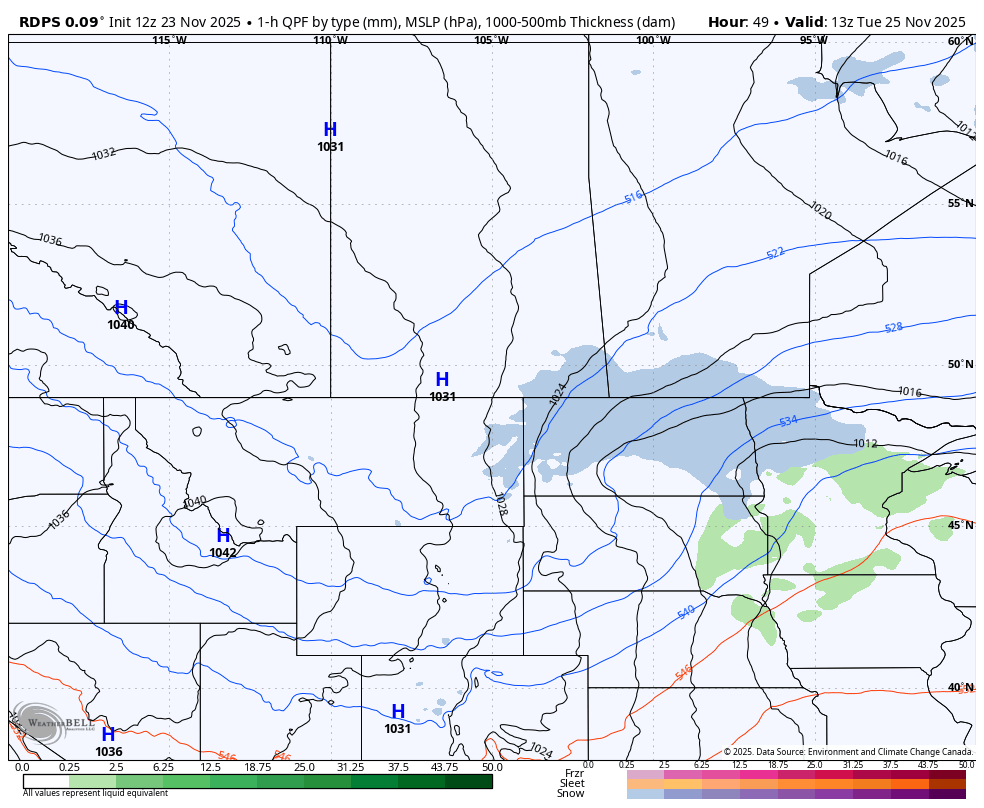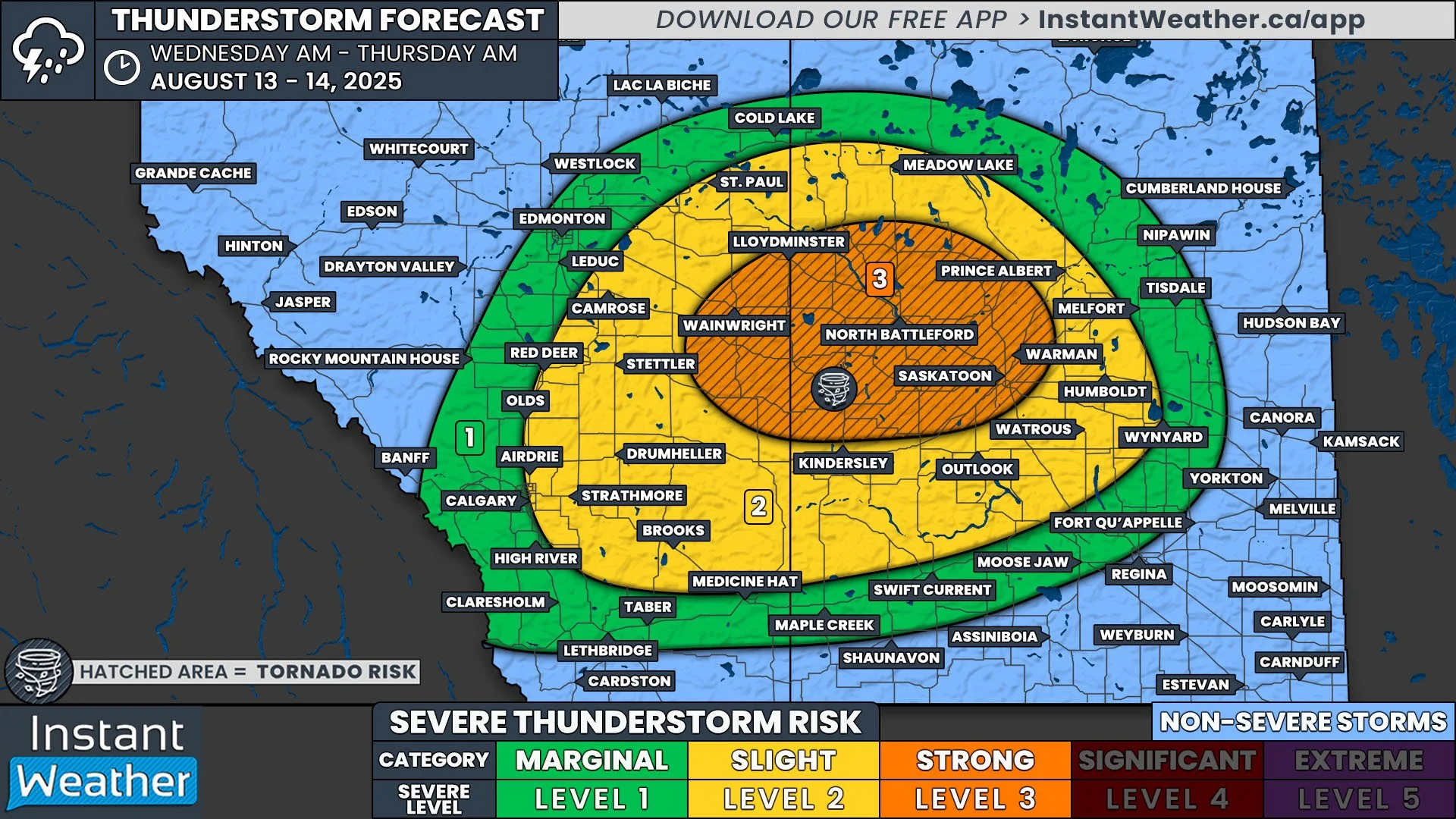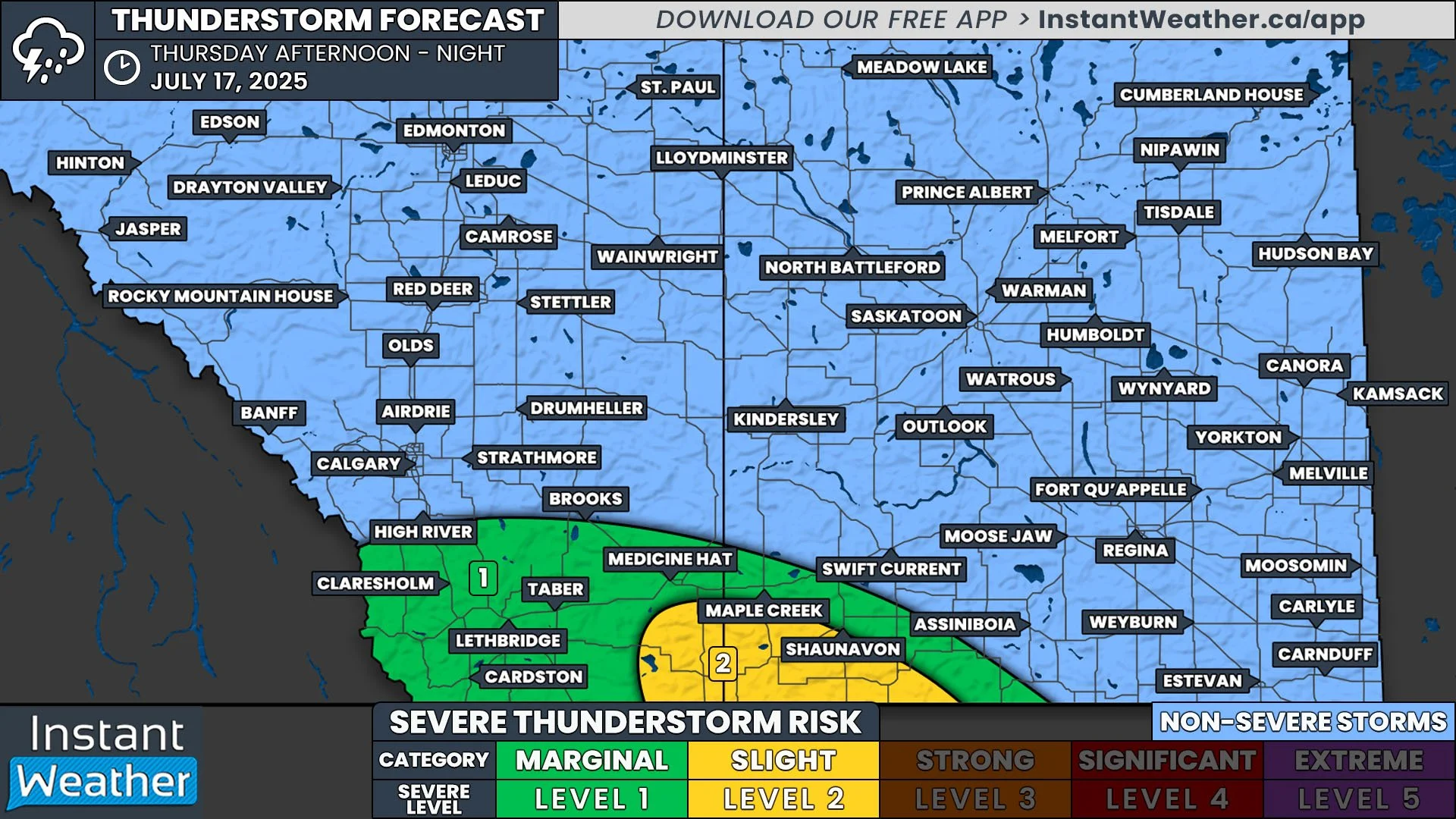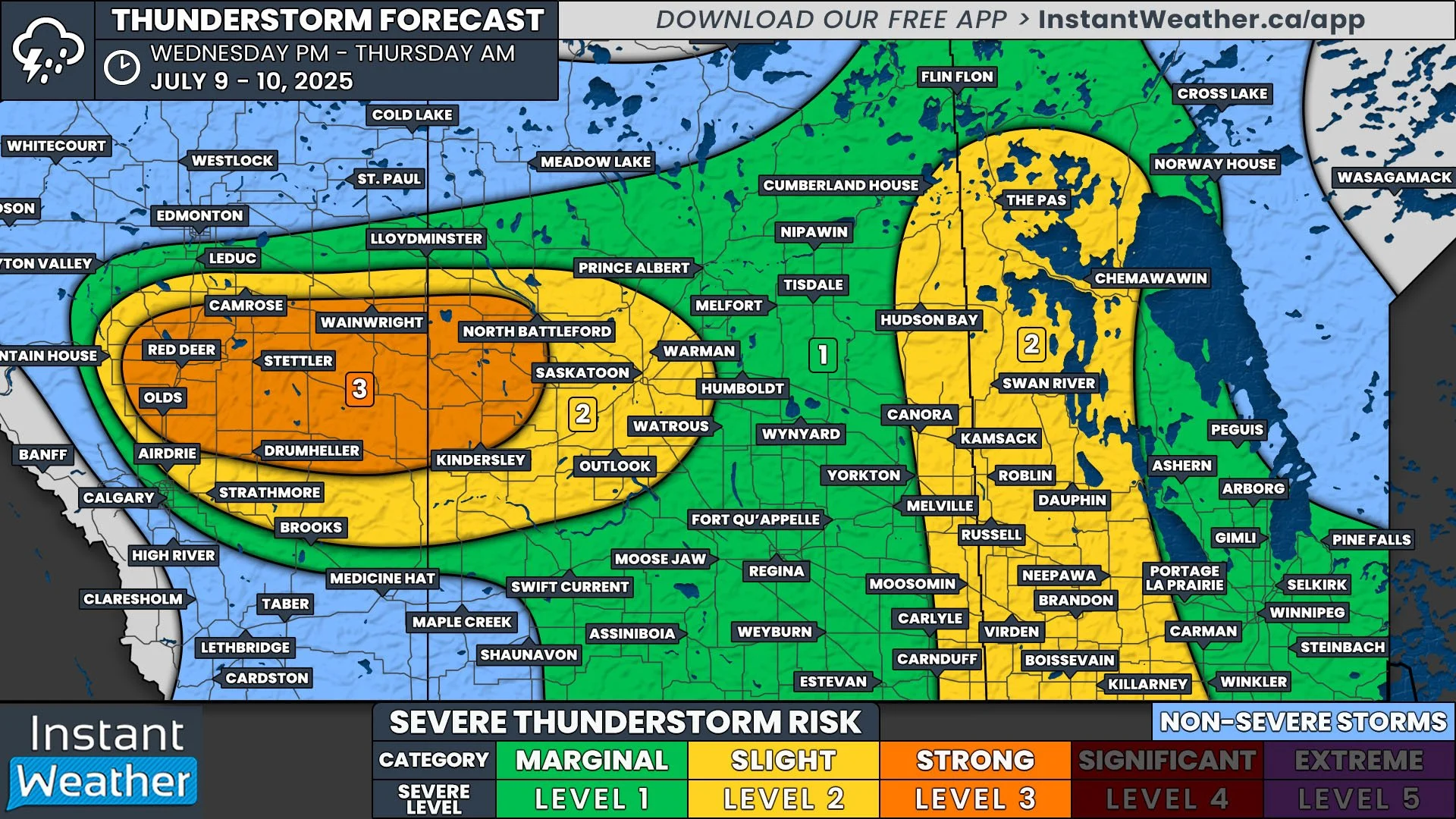Widespread 5–15cm of Fresh Snow to Blanket the Southern Prairies Early This Week
/As we get closer to the start of the storm expected to cross the Prairies and weather models have come closer in agreement, we now have more confidence to discuss the potential impacts over the next couple of days. This storm will travel eastward along the international border, which will limit most of the snowfall to southern portions of all three Prairie provinces.
Alberta
The snow will make its way into Southwestern Alberta after midnight, gradually spreading eastward across the province during the early and mid-morning hours. It’s during this time that there is also a risk of freezing rain for communities closer to the border, but it will quickly be replaced by snow. Meanwhile the scattered flurries remaining from Sunday through Calgary to Red Deer are also expected to organize and intensify, joining the snow further to the south.
The rdps model showing precipitation type and intensity at 7am MT on Monday, courtesy of WeatherBell.
As we get later in the morning, there will likely be some intensification and increased snowfall rates along the Highway 3 corridor and southward, which will result in greater overall accumulation. By lunchtime, the snow will begin to taper off to the north of Calgary and then from west to east starting in the early afternoon and exiting the province completely in the evening.
A widespread 5-15cm of snow is predicted by the end of Monday across Southern Alberta and areas that experience the heavier snowfall closer to the border could be on the higher end of that range. There could be pockets where accumulation totals could approach 20cm to the south of Highway 3, but this is much more likely to occur east of Highway 36.
The rdps model showing precipitation type and intensity at 7pm CT on Monday, courtesy of WeatherBell.
Saskatchewan
The leading edge of the snow will move into Southwest Saskatchewan in the mid-morning and it will spread eastward across the province through the day. There is also the slight risk for some freezing rain along the border to the south of Maple Creek and Shaunavon, but it should be over quickly.
The snowfall across Saskatchewan will be fairly short-lived and by the time the snow reaches the Manitoba border in the evening, it will actually start to taper off back along the Alberta border. Throughout the remainder of the evening, overnight and into Tuesday morning, the snow will gradually end from west to east.
Similarly to in Alberta, much of Southern Saskatchewan can expect at least 5cm of snow by midday Tuesday. There will also be heavier snowfall from Maple Creek to Estevan, mostly along Highway 13 and southward. This particular region will likely see snowfall totals around 20cm and Environment Canada may issue a snowfall warning to reflect this.
The rdps model showing precipitation type and intensity at 7am CT on Monday, courtesy of WeatherBell.
Manitoba
By the time the snow makes its way into Manitoba Monday evening, the entire system is expected to shift course and start moving more in a southeast direction as it interacts with another low pressure system from the States. As a result, the steady moderate snowfall will not extend as far east through the province. Regardless, the snow will still make its way across Southern Manitoba overnight and into Tuesday morning. It will slowly start to taper off from west to east around sunrise, gradually ending for border communities in the Eastman Region Tuesday evening.
The system will also start to weaken as it makes its way into Manitoba, so the heavier snowfall expected in both Alberta and Saskatchewan is looking like it won’t be as much of a concern. There will still be a swath of the region that can expect more than 5cm of snow by the end of Tuesday, but it is likely that this won’t exceed 10cm.
It is possible that this change in direction is more subtle than showing on weather models or doesn’t occur at all. We will watch as the system takes shape and makes its way through Alberta and Saskatchewan. If it appears that the track will change from what was initially expected, it’s likely that we will update our forecast for Manitoba.
As it stands, a decent amount of snow is expected to fall across the Southern Prairies. This snow will be heavy in some areas, which will likely make travel a headache, especially on some of the busier highways. Be sure to give yourself plenty of extra time if travelling during these periods of heavy snowfall and stay safe.


